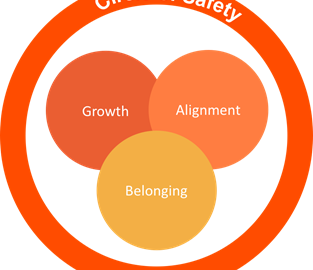In its now classic landmark study “Driving Employee Performance and Retention Through Engagement”, the Corporate Leadership Council assessed the impact of 160 ‘levers’ on performance and retention. Various aspects were covered such as the role of the line manager, satisfaction with compensation, the daily work, learning and development and organizational culture.
From this study three elements came out as having the biggest impact on the effort employees were willing to make. None of these elements were money, purpose or growth. Instead it was alignment; i.e. an employee’s ability to understand:
- the connection between their work and the organization’s strategy
- the importance of their job to the organization’s success, and
- how to successfully complete tasks
Do you know what I like about these three ‘levers? We as leaders and line managers can individually and directly influence them for our team members. We don’t need to rely on CEO’s, bosses of bosses or even the HR department. No, you and I can directly help employees understand all of these three ’levers’.
Here’s a simple fact:
People who know how their work relates to the overall direction of the company will be able to take ownership and direct their own work.
This fits directly into what Daniel Pink called ‘Autonomy: the desire to direct our own lives’ in his book Drive: The Surprising Truth About What Motivates Us.
 In my own Leadership Framework (above), alignment is a key component of a leader’s role in which they are expected to:
In my own Leadership Framework (above), alignment is a key component of a leader’s role in which they are expected to:
- Help members understand the connection between their work and the organizational strategy
- Make them feel the importance of their contribution towards the organizational success
- Give members the resources required to deliver and clear roadblocks that stops them from delivering
- Share information widely and freely
- Give a real ‘voice’ to how things are run
For me, these elements can be summarized in a simple statement by explaining ‘Why and What but not How’.
How do you practically implement this? For one, you could help team members understand the importance of the task at hand and how its successful completion would contribute to the achievement of the organization’s larger goal or purpose. You should be very clear on the expectations of what needs to be achieved, including goals, KPI’s and milestones and. If relevant, you should also clearly spell out which stakeholder needs to display buy-in and commitment to the task. Having done this, let the individual or team decide for themselves on how they want to go about achieving it. Let them make mistakes. However, be sure to communicate to them that they can always come to you. Irrespective if they are stuck, have a question or just want to bounce off an idea, reassure them that you are always there.
Of course this works only for team members that are capable. You as a leader have to ensure that your team members have the capability to do the job at hand. This is where I queue in next week’s blog in which I’ll be discussing growth.
Business & Finance Articles on Business 2 Community(57)
Report Post








